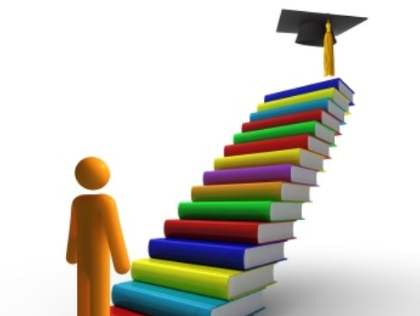Only 200 years ago, the difference in economic conditions among those living in different parts of the world was minimal. It was the industrial revolution with automated means of production that created imbalances in production levels and economic conditions across the globe. 

Countries which were able to adapt to the new technologies during the industrial revolution became richer compared to the rest of the world. The ability to create and utilise new technologies made all the difference in economic development.Among other things, access to quality education and knowledge diffusion made a major contribution to this technological change in the developed world. Education has played a very important role in developing economies and improving living standards across the globe.Development in education quality and access, renewed emphasis on technical and vocational education can contribute to the economic success of any nation.Pakistan has huge challenges in improving the quality and access to education for its citizens.The public education system has failed to provide quality education. The literacy rate in Pakistan (57.7 percent) is one of the lowest in the world (144th country out of 160). Primary enrolment is only 68.5 percent. A mere 15 percent of 15-16 year-olds are enrolled in secondary education and enrolment in universities of 18-23 year-olds is only 5.1 percent.Lack of motivation and absenteeism among teachers, and poor school and district management also contribute to low qityual-education and the low retention rate. There are no incentives for better performing schools or any penalties for very poorly performing ones. Politically motivated teacher appointments have created a shortage of local school teachers in remote areas. Most of the teachers appointed in the rural areas reside in urban centres and lack motivation to move or travel to far-flung rural areas.Pakistan has a huge gap to fill not just in improving its literacy rate which only represents primary education but also in improving access to secondary, higher, university and vocational education. With GDP growth peaking at between four and five percent, which is partly due to the low rate of educated and skilled population in the country, Pakistan lacks the much needed funding to kickstart education reforms.Part of the gap can be filled in the short and medium terms with encouraging and subsidising private education, especially in the urban areas of the country by taking the following steps. The first and most urgent need is ensuring the primary enrolment rate goes up to 100 percent.The provincial governments need to identify non-enrolled primary age children and enforce Article 25-A for each 5-16 year-old child. Computerisation of birth certificates and enrolment with birth certificate numbers can help in this identification and enforcement exercise.Similarly, the government needs to set up strong independent provincial education regulators with representatives in all districts. The regulator should assess the quality of education of each private and public school against standard national attainment levels. The intervention through the private sector will give the government time to introduce much-needed education reforms in public-sector education.Public-sector education is vital for the long-term education needs of the country. It needs to be reformed to meet the economic challenges and opportunities presented by globalisation and increasing international and regional competition. Knowledge and skill diffusion can contribute towards reducing inequalities.